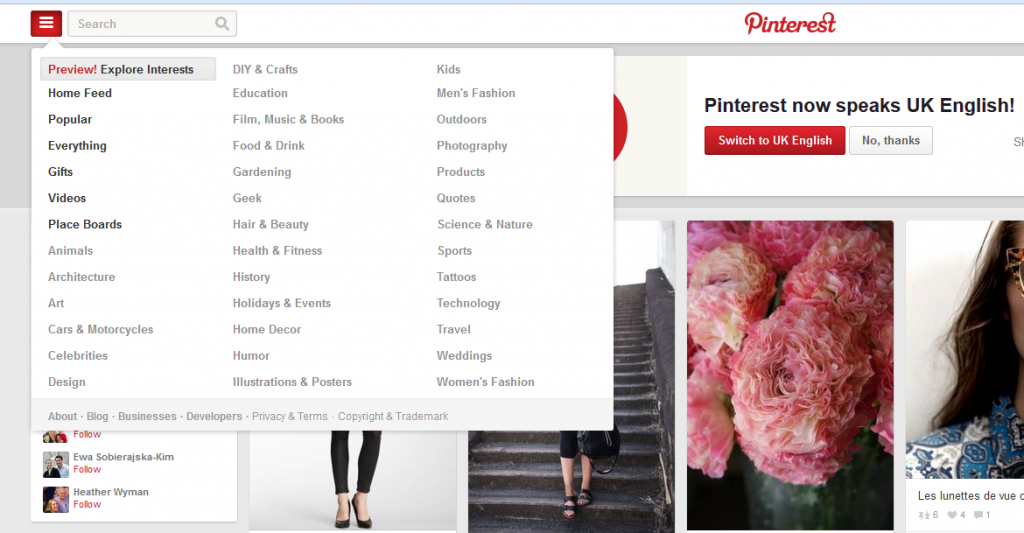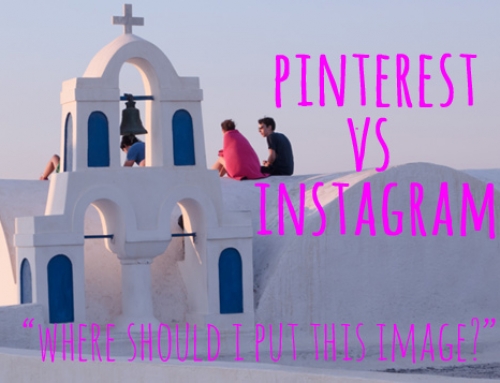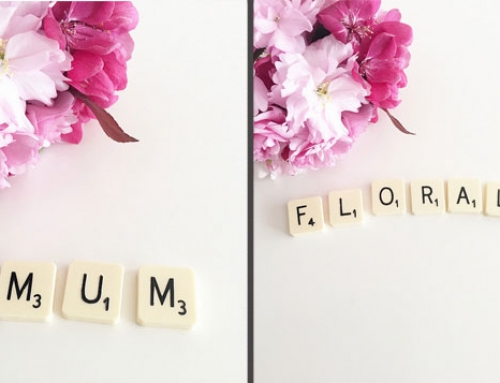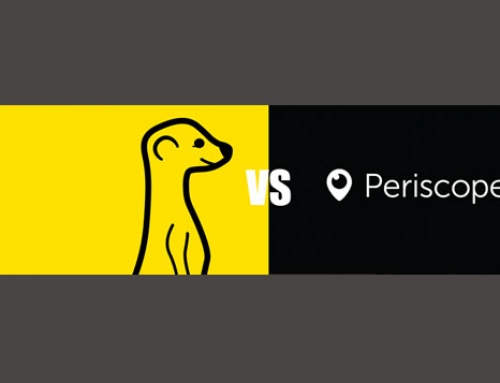Visual loveliness-fest Pinterest just keeps going from strength to strength. Like all the social media sites, they’re constantly looking for ways to make the user experience more compelling – to keep you there for longer, and to help you discover new things you didn’t even know you were interested in.
Their latest offering is a function to help you do exactly that – the “Interests” option. This is being rolled out gradually but we’re seeing it in the UK already, so go and take a look!
What is the Interest function?
Basically, it’s a way of both grouping related content together, but in a way that gives more sophisticated and “fuzzy” results than a standard topic search, and allows Pinterest to put content in front of the user which they might not otherwise see. So when a user goes into the Interests area, they will see content that’s related to their own pins, but not necessarily on identical topics.
So for example, a user who’s Pinned images of Namibia on a “dream travel” board might get suggested content around “Deserts”, because one of Namibia’s key tourist attractions is their amazing red dunes.
Does it work?
The feature’s somewhat in its infancy at the moment, and also it’s one of those areas where what you put in very much affects what you get out. If you’re a heavy Pinterest user, then you’ll have given the site plenty of clues about what might amuse you, and your results are likely to be better. If you’ve only got a few pins currently, the Interest section may be more hit and miss.
However, compared to the old Related Pins option, which never seemed to work that well, Interests is getting rave reviews from users:
What’s the significance for business users?
Firstly, that this should be a good opportunity for enhanced visibility. Anything which brings stuff outside their current “bubble” to the attention of users, has got to be a good thing.
Secondly, it also means that thinking laterally about the interests you have in common with your customers (rather than just what your immediate products are) is even more important. Providing related content gives you a chance to get in front of a whole new set of potential customers.
We’d also recommend thinking a bit cleverly about how you can provide content which conveys your USP’s as a company, and your brand values. As an example: if you’re running a travel company at the more budget end of the market, there’s a LOT of competition.
If your “above and beyond” service is what sets you apart from the competition, how about sourcing images of great, value range bikinis / skiwear / whatever and posting them under the slogan “we want every part of your holiday to be perfect”. Every time those images are re-pinned (shared), your brand – and your USP – goes with them.








Leave A Comment